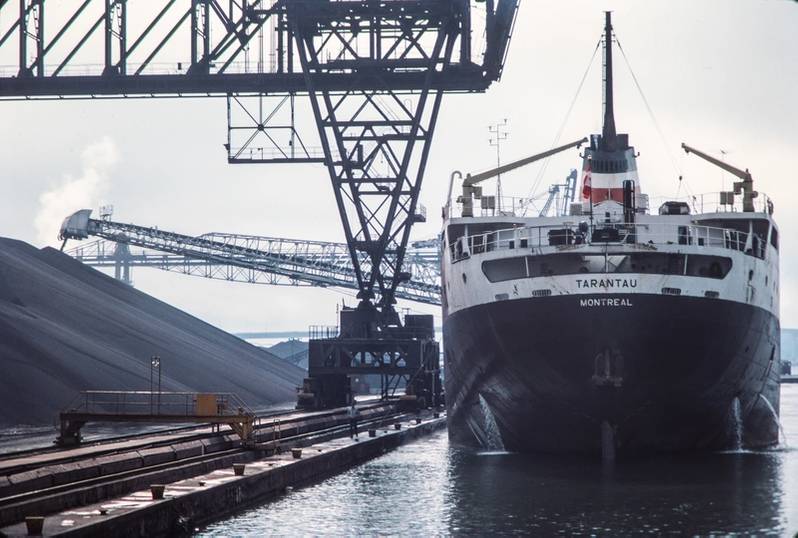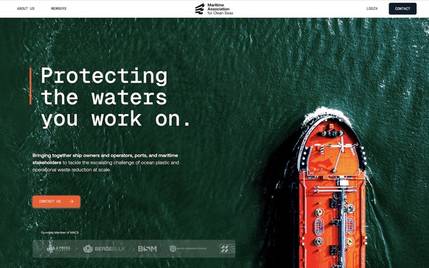The Great Lakes BWMS Regulation Scrum
There hasn’t been an invasives species introduced to the Great Lakes from ballast water since 2006. So, what’s the problem now?
As far as Transport Canada is concerned: “Scientific sampling to date consistently shows that ballast water management systems (BWMS) used in the Great Lakes reduce organism densities in ballast water discharges by over 99%, consistent with global evidence. As crews gain experience in operating these systems, performance continues to improve, contributing to the ongoing protection of Canada’s waters from invasive species.”
However, a 2025 publication supported by Transport Canada and Fisheries and Oceans Canada reported that nearly half of discharge samples studied did not comply with the IMO Convention D-2 performance standard. The Convention, like the USCG ballast water regulations, includes organism discharge standards - not reduction percentage levels.
BWMS are not working, says James Weakley, President of the Lake Carriers’ Association (LCA). The association is working with various research organizations, the EPA and the US Coast Guard to test systems. “There's no equipment that will work on a US-flag Laker under the American rules,” he says.
Currently, compliance testing doesn’t involve ensuring treatment efficacy in the waters of the Great Lakes which have high tannin and sediment loads and vary in temperature across the lakes from freezing to over 70 degrees.
“Our test conditions are probably the most difficult test conditions in the world, and no BWMS that's commercially available has been proved to work. The US recognizes that, and they've given a pass to Lakers.”
In contrast, Weakley says vessels are deemed compliant by Transport Canada if they have a BWMS onboard, even if operating it doesn’t meet the numerical standard for the maximum number of viable organisms discharged. The IMO Ballast Water Management Convention does not include a “deemed compliant” provision mentioned by Transport Canada. “Our test conditions are probably the most difficult test conditions in the world, and no BWMS that's commercially available has been proved to work.”
“Our test conditions are probably the most difficult test conditions in the world, and no BWMS that's commercially available has been proved to work.”
-James Weakley, President of the Lake Carriers’ Association (LCA).
He says Canada has gotten “cute” by claiming to have jurisdiction over US ports. “They believe that if the ballast water originated in Canada and it's discharged in the US, that Canada now has jurisdiction over that US port, because the ballast water originated in Canada.” Transport Canada does not have control of discharges in U.S. ports.
“Everywhere in the world and IMO, it's a discharge standard. Discharge standard, because you're discharging. It's an operational activity that's being controlled, and you have to meet that standard, unless you're in Canada and you have the ‘deemed’ compliance standard,” says Weakley.
“Canada believes to protect one Canadian port from another Canadian port, that if you pick up the organism in, say, Windsor, Ontario, and you move it to a US port, say, Duluth, Minnesota, and you discharge it and you kill it upon discharge, because another Laker could pick it up in Duluth and move it to Thunder Bay, Ontario, and somehow it magically comes back to life and needs to be killed a second time.
“We object to that. We filed a petition with the Federal Maritime Commission saying that Canada is only doing that for economic reasons - to drive US-flag lakers out of the cross-lake trade.”
Weakley says that new Canadian vessels are leaving Chinese yards with cheap BWMS. “We're not rebuilding the way the Canadians are.”
In mid-September, Transport Canada did not grant extensions to the existing exemptions for installing BWMS that LCA members say they need to align with their upcoming contracts being negotiated for 2030. Weakley sees this as effectively placing a regulatory embargo on LCA ships going to Canada. “With differing requirements in both countries, our seafarers receive conflicting compliance directives from regulators and inspectors, resulting in uncertainty, costly delays, and confusion.”
“With differing requirements in both countries, our seafarers receive conflicting compliance directives from regulators and inspectors, resulting in uncertainty, costly delays, and confusion.”
Providing the perspective of Canadian shipowners, Jason Card, Director of Communications, at Canada’s Chamber of Marine Commerce (CMC), says the CMC advocates for safe, sustainable, harmonized, and competitive policy and regulation that recognizes and supports marine transportation’s significant contributions across North America.
“Given the focus of our organization, the inconsistency in ballast water regulations between Canada and the United States has been a concern, as it is creating uncertainty for stakeholders in both countries.
“Transport Canada's regulations set out performance standards for discharging ballast water. Installing ballast water systems is the only means by which Canadian operators can comply with the standards set out by Transport Canada, and so Canadian ship owners have taken action to maintain compliance. Under US regulations, US operators of existing vessels are currently exempt from these regulations and have been given extended permission to operate in Canadian waters without the equipment.”
Card also points to the challenging water conditions in many Great Lakes ports. “This poses serious operational challenges for all manner of systems. Lack of clear guidance and enforcement is also a problem. With differing requirements in both countries, our seafarers receive conflicting compliance directives from regulators and inspectors, resulting in uncertainty, costly delays, and confusion.” Copyright kmm7553/AdobeStock
Copyright kmm7553/AdobeStock
There is misalignment in the approach taken by Transport Canada and the EPA, and the manner in which this discrepancy will be handled in future is unclear, he says, a significant problem for an industry that needs certainty to effectively plan operations and manage costs. Full alignment between Canada and the US from a regulatory perspective would reduce challenges and uncertainty for all players.
“Canadian shipowners have had to adopt ballast water systems to comply with Transport Canada regulations and in doing so have incurred millions in capital and operational costs to install and maintain equipment that was not designed for the conditions in which they operate. To date, US shipowners have not been made subject to such complication and expense.”
Transport Canada says its ballast water regulations, published in June 2021, currently remain in full effect. These regulations require vessels built before January 1, 2009, to install a BWMS by September 8, 2030, while vessels built after January 1, 2009, must comply by September 8, 2024. The cut-off date was chosen to align with US Environmental Protection Agency rules introduced in 2013 under the Clean Water Act.
Transport Canada says the regulations consider domestic operating realities such as the logistical and technical challenges of installing BWMS across a large fleet in a short timeframe, especially for older vessels designed prior to the ballast water management era. As such, vessels operating exclusively in Canadian waters and the Great Lakes were provided with extended timelines for compliance. In certain cases, Canadian and US vessels have been granted time-limited extensions or exemptions due to supply chain issues related to the pandemic and limited drydock capacity.


















